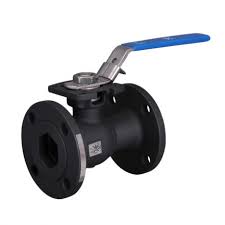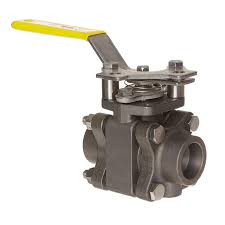Carbon Steel Ball Valve

The Application of Carbon Steel Ball Valve
The Carbon Steel Ball Valve, proudly manufactured by Cameron, is a robust and reliable solution for fluid control applications. Featuring a durable carbon steel construction, this valve ensures long-term performance and corrosion resistance in demanding environments. With its versatile design, it accommodates various configurations, including the innovative v notch ball valve for precise flow control. Engineers and operators can refer to the ball valve size chart and API valve trim chart to select the optimal valve size and trim configuration for their specific requirements. For applications requiring Trim 12 material, the Carbon Steel Ball Valve delivers exceptional performance and durability. Trusted by industries worldwide, including oil and gas, petrochemical, and power generation, the Cameron T31 Ball Valve exemplifies excellence in fluid control technology.
Features of Carbon Steel Ball Valve
- Single Piston Effect: ZECO’s carbon steel ball valve adopts the standard single piston design. Pressure from both upstream and downstream sides pushes the seat rings against the ball. This mechanism ensures automatic release of overpressure in the valve’s fully open or fully closed position.
- Fire Safe Design: Equipped with a fire-safe design, the valve prevents leakage from the stem area using two o-ring seals and a gland gasket. Leakage through the valve body connection is blocked by an O-ring seal and a body gasket. The fire-safe stem packing further prevents external leakage after fire exposure.
- Anti-Static Device: Featuring an anti-static device, the valve prevents the harmful effects of static electricity on the pipeline.
- Anti-Blow-Out Stem Design: ZECO’s carbon steel ball valve incorporates an anti-blow-out stem design to prevent personal injury caused by the flying stem during maintenance.
The Parameter of Carbon Steel Ball Valve
- Valve Type: Carbon Steel Ball Valve
- Brand: Manufactured by ZECO
- Design: Standard single piston effect design
- Fire Safe Design: Includes two o-ring seals and a gland gasket to prevent leakage from the valve stem area
- Anti-Static Device: Equipped with an anti-static device to prevent the harm of static electricity on the pipeline
- Anti-Blow-Out Stem Design: Features an anti-blow-out stem design to prevent personal injury during maintenance

The Operation Theory of Carbon Steel Ball Valve
The operation theory of the SBB Ball Valve revolves around its versatile design, making it suitable for various ball valve applications. Similar to a forged ball valve or metal seated ball valve, the SBB Ball Valve utilizes a spherical closure element to control fluid flow. Designed to meet standards like API Trim 12 and API 600, it ensures reliable performance in demanding environments. The valve operates by rotating the ball to either allow or block the flow of fluid through the valve body, providing precise control and shut-off.
The Parameters Table of Carbon Steel Ball Valve
| Component | Material |
|---|---|
| Body | Carbon steel |
| Ball | Carbon steel or Stainless steel |
| Seat | PTFE or PEEK |
| Stem | Stainless steel |
| Stem Packing | PTFE or Graphite |
| Gasket | Graphite or PTFE |
| O-Ring | Nitrile rubber |
| Bolts and Nuts | Carbon steel or Stainless steel |
Relevant Information about Carbon Steel Ball Valve
- Rotor (Rator): In a ball valve, the ball acts as the closure element or “rotor”. It rotates within the valve body to control the flow of fluid.
- Stator: The stator is not typically a component of a ball valve. It’s commonly found in motors or generators and serves to provide a stationary magnetic field.
- Universal Joint: Universal joints are not typically found in ball valves. They are commonly used in mechanical systems to transmit torque between non-aligned shafts.
- Shaft Seal: Ball valves may have a shaft seal to prevent leakage along the valve stem. This seal can be made of materials like elastomers or PTFE.
- Driving System: In manual ball valves, the driving system involves a handle or lever that the operator uses to manually open or close the valve. In automated valves, a driving system such as an electric, pneumatic, or hydraulic actuator is used to control the valve remotely.